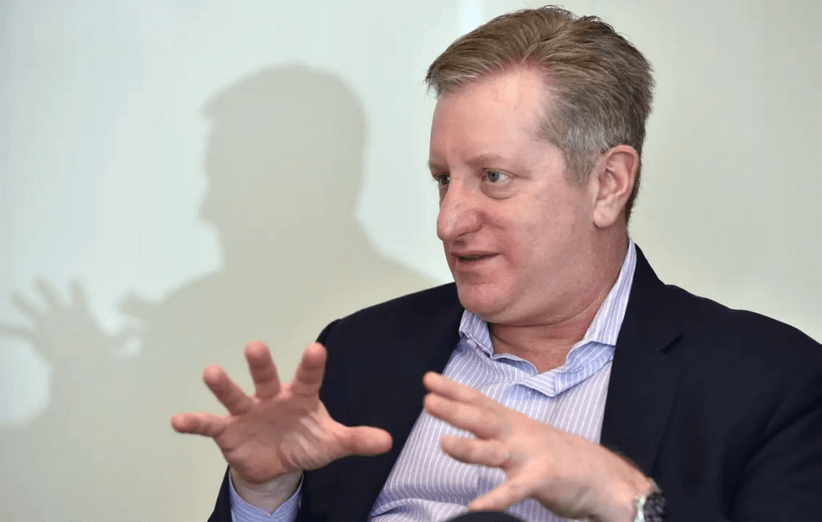📑 Table of Contents
In the times of financial history, few figures are as compelling and complex as Mark Baum, aka Steve Eisman. Known for his unorthodox approach and piercing insight into the mechanisms of Wall Street, Baum became a symbol of prescience and prudence in an era marked by excess and oversight.
This deeper dive into Baum’s life, strategies, and legacy offers a more nuanced portrait of a man who not only foresaw one of the greatest financial downturns of our time but also sought to rectify the systemic flaws that allowed it to happen.
The Making of a Maverick
Mark Baum’s journey into finance wasn’t driven by a mere appetite for wealth; it was fueled by a quest for truth and transparency within the financial sector. With a background that combined rigorous academic training with real-world experience, Baum cultivated a keen sense of skepticism towards financial products and practices that were widely accepted by his peers. This foundational belief system set the stage for his later actions and advocacy.
Deciphering the Market’s Mysteries
Baum’s analytical prowess shone brightest when he began to unravel the complexities of the subprime mortgage market. At a time when the housing bubble was inflating to dangerous proportions, he meticulously dissected the underpinnings of mortgage-backed securities and identified the catastrophic risk they posed to the global economy.
His strategy was not merely to observe but to act, leveraging his insights to protect his clients and the broader financial system from impending disaster.
A Crusade Against Complacency
What set Mark Baum apart was not just his ability to predict market trends but his moral stance against the practices he believed were ethically dubious. He viewed the rampant speculation and lack of due diligence in the industry not just as a failure of regulation but as a breach of trust between the financial sector and the public.
Baum’s crusade was as much about instilling integrity in finance as it was about averting financial ruin.
In the realm of luxury timepieces, Christopher Ward watches stand out for their remarkable blend of traditional craftsmanship and modern innovation. This British watchmaker has quickly risen through the ranks to become synonymous with quality, precision, and affordability in the world of horology.
Mark Baum’s Signature Style and the Rolex Submariner
When discussing Mark Baum, it’s impossible not to mention his distinctive personal style. Baum’s attire reflects his unique approach to both life and the financial world. He often opts for a look that merges professional with personal flair, making a statement in every boardroom he enters.
Baum favors sharply tailored suits, a testament to his meticulous nature. He typically chooses dark, classic colors, such as navy or charcoal, which convey his seriousness and professionalism. Yet, he personalizes his ensemble with vibrant ties or pocket squares, adding a pop of color that hints at his unconventional thinking.
So, beyond his financial acumen, Mark Baum’s personal style also speaks volumes about his character and preferences. Known for his sharp, pragmatic approach to finance, Baum’s wardrobe mirrors this philosophy with its functional elegance and understated sophistication. A key element of his signature style is his choice of watches, especially the iconic Rolex Submariner.
The Rolex Submariner is not just a watch; it’s a statement. Favored by Baum for its robustness and timeless design, this watch reflects his values of reliability and precision. The Submariner, renowned for its durability and classic aesthetic, complements Baum’s no-nonsense approach to both his professional and personal life. Its presence on his wrist underscores a commitment to quality and an appreciation for craftsmanship that withstands the test of time.
Why Baum Chooses the Submariner!
Baum’s preference for the Rolex Submariner reveals much about his personality. He values tools that perform under pressure and maintain their integrity in the face of challenges. The Submariner, originally designed for divers, offers water resistance and legibility in the darkest depths. Similarly, Baum navigates the deep waters of finance, relying on instruments that promise unwavering performance.
The Legacy of Mark Baum
Mark Baum relentlessly advocated for transparency within financial markets. He believed that clear, accessible information is the cornerstone of a healthy economy. His efforts encouraged a shift towards more open disclosure of financial risks and operations, guiding both investors and regulators toward demanding greater accountability from financial institutions.
Baum’s approach went beyond mere profit. He championed the cause of ethical investment, inspiring others to consider the broader implications of their financial decisions. Today, his influence is evident in the growing interest in socially responsible investing (SRI) and environmental, social, and governance (ESG) criteria among investors seeking not just returns but also positive impact.
The insights and foresight Baum demonstrated before the financial crisis played a pivotal role in shaping subsequent regulatory reforms. His critique of lax oversight and risky financial products contributed to a reevaluation of regulatory frameworks, leading to the implementation of stricter controls designed to prevent future financial collapses.
Baum’s legacy extends into education. His story and strategies have become case studies in business and finance programs worldwide, teaching students the importance of analytical rigor, ethical consideration, and the value of questioning conventional wisdom. Through these lessons, Baum continues to influence the financial leaders of tomorrow.
Perhaps most importantly, Mark Baum’s legacy is one of courage. He stood firm in his convictions, even when it meant going against the grain of popular opinion and financial trends. His example encourages current and future finance professionals to lead with courage, always willing to speak up for what is right, even in the face of adversity.
Notable dates in the life of Mark Baum
- May 8, 1962: Birth of Mark Baum in New York City, USA.
- Early 2000s: Baum becomes a prominent Wall Street figure, known for his critical analysis and investment strategies.
- 2007-2008: Baum predicts and bets against the subprime mortgage market, anticipating the financial crisis that unfolds.
- 2010: Baum is featured prominently in Michael Lewis’s book “The Big Short” for his role in betting against the housing market.
- 2011: Baum leaves FrontPoint Partners LLC and joins Neuberger Berman as a portfolio manager.
- 2015: Baum becomes managing director at Neuberger Berman and continues to manage investment portfolios.
- 2019: Baum gains further attention for his commentary on financial markets, particularly regarding the impact of economic policies and global events.
- Present: Baum remains an influential figure in finance, offering insights into markets and investment strategies through media appearances, conferences, and interviews.
In the current era, where financial products have become even more intricate and global markets more interconnected, Baum’s principles of skepticism, due diligence, and ethical consideration offer valuable guidance.
Investors and financial professionals who adopt Baum’s approach can better navigate the uncertainties of the market, ensuring that they not only achieve financial success but also contribute to a more stable and equitable financial system.
In the pantheon of dance and entertainment, few names shine as brightly as that of Fred Astaire, whose legacy of elegance, skill, and innovation in dance continues to inspire generations. However, the curiosity and intrigue surrounding Fred Astaire Jr. often relate to how he navigated the immense legacy left by his father.
Conclusion
Mark Baum’s story is a compelling narrative of foresight, integrity, and resilience in the face of systemic challenges. By examining his life and legacy in detail, we gain not only a deeper appreciation for his contributions but also actionable insights that can inform our approach to finance and investment.
Baum’s legacy reminds us that in the world of finance, the greatest profits come from understanding the risks, questioning the assumptions, and always striving for a higher ethical standard.
In today’s fast-paced world, staying active and monitoring your progress has never been easier, thanks to the advancement in wearable technology. Sports watches have emerged as an indispensable tool for athletes and fitness enthusiasts alike.
These innovative devices not only keep time but also track a wide range of physical activities, monitor heart rates, and even analyze sleep patterns, ensuring that users can maintain an optimal balance between workout intensity and recovery.








